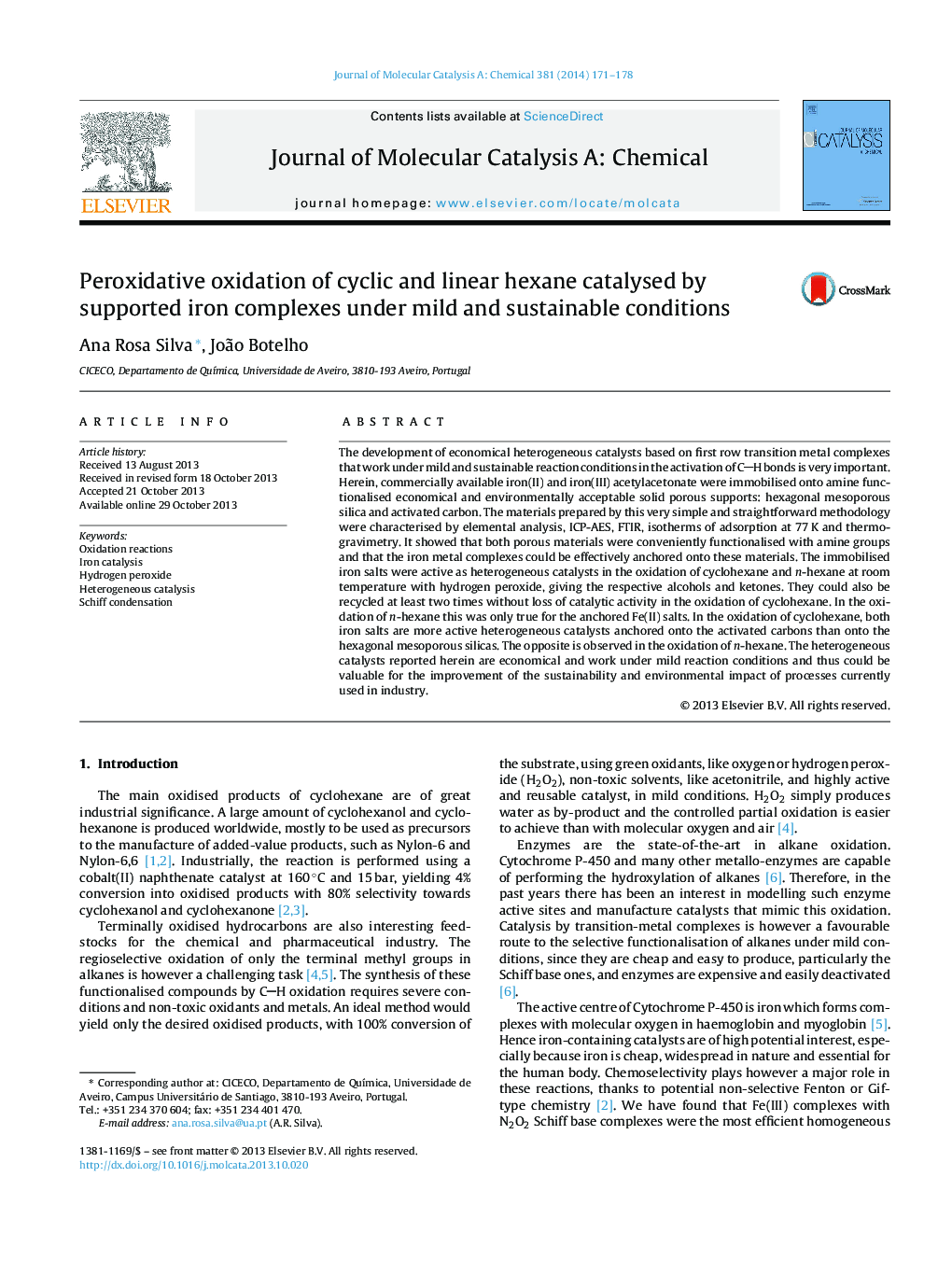| Article ID | Journal | Published Year | Pages | File Type |
|---|---|---|---|---|
| 65482 | Journal of Molecular Catalysis A: Chemical | 2014 | 8 Pages |
•Iron salts are homogeneous catalysts in the oxidation of cyclohexane and n-hexane.•Were anchored onto activated carbon and mesoporous silica by simple procedure.•New heterogeneous catalysts for the oxidation of cyclohexane and n-hexane.•Room temperature and sustainable conditions were used.•Higher yields in oxygenates obtained than in the harsher industrial process.
The development of economical heterogeneous catalysts based on first row transition metal complexes that work under mild and sustainable reaction conditions in the activation of CH bonds is very important. Herein, commercially available iron(II) and iron(III) acetylacetonate were immobilised onto amine functionalised economical and environmentally acceptable solid porous supports: hexagonal mesoporous silica and activated carbon. The materials prepared by this very simple and straightforward methodology were characterised by elemental analysis, ICP-AES, FTIR, isotherms of adsorption at 77 K and thermogravimetry. It showed that both porous materials were conveniently functionalised with amine groups and that the iron metal complexes could be effectively anchored onto these materials. The immobilised iron salts were active as heterogeneous catalysts in the oxidation of cyclohexane and n-hexane at room temperature with hydrogen peroxide, giving the respective alcohols and ketones. They could also be recycled at least two times without loss of catalytic activity in the oxidation of cyclohexane. In the oxidation of n-hexane this was only true for the anchored Fe(II) salts. In the oxidation of cyclohexane, both iron salts are more active heterogeneous catalysts anchored onto the activated carbons than onto the hexagonal mesoporous silicas. The opposite is observed in the oxidation of n-hexane. The heterogeneous catalysts reported herein are economical and work under mild reaction conditions and thus could be valuable for the improvement of the sustainability and environmental impact of processes currently used in industry.
Graphical abstractFigure optionsDownload full-size imageDownload high-quality image (79 K)Download as PowerPoint slide
